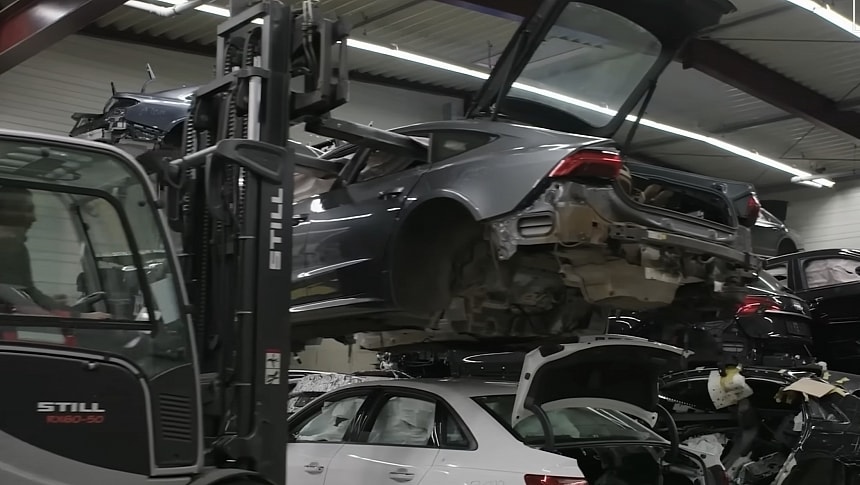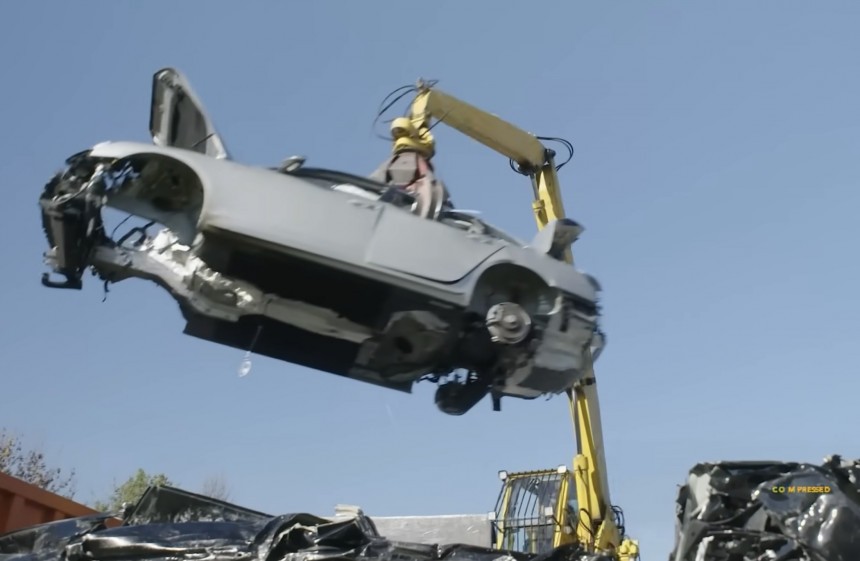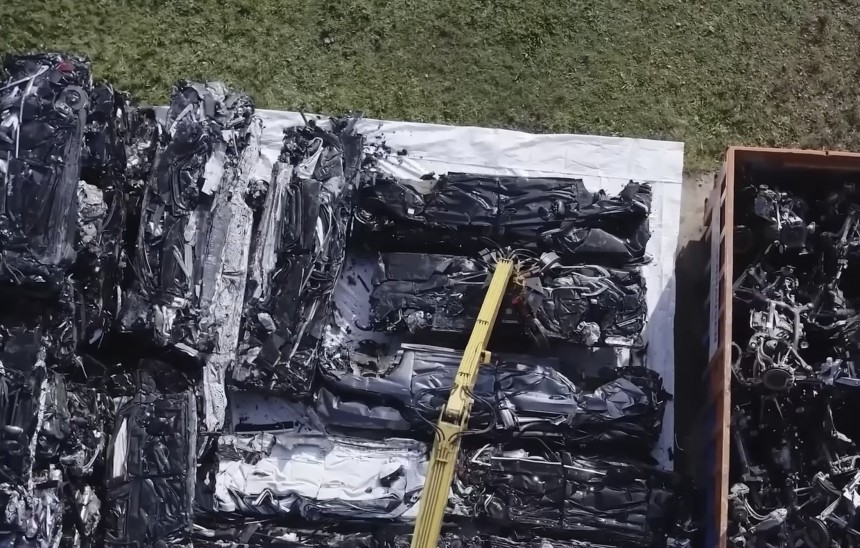Where do cars go to die? Some end up in a scrapyard and are stripped down so parts can be sold on the used car parts market. Others end up in the crusher, and that is the end of it. Meanwhile, some get another chance at life when they shouldn't. But Audi has different plans for the cars no longer needed. The German carmaker created a program that allows saving and reusing materials from old vehicles. They call it the MaterialLoop.
Audi has been working on the implementation of a material loop as part of a recycling process, thus testing the circular economy potential of end-of-life vehicles for sustainable growth.
When they don't need a car anymore, they recycle it. They start the process by draining the fluids with the help of various types of suction pumps. Fluids are not recyclable. Thus, the engine oil, transmission oil, braking fluids, and fuel, if any, are all responsibly disposed of so they won't cause any harm to the environment.
A gas-charging machine drains the refrigerant in the air conditioning system of the vehicle. The airbags are exploded in a contained environment with the help of a battery.
Recycling experts break the windows and screens using a strong impactor. The windshield is cut with a suction glass cutter. The shattered glass is collected and will be used again in new vehicle manufacturing process.
Doors, interior items, and upholstery are separated depending on material classes. Therefore, glass goes to glass, metal to metal, and leather to leather. They don't mix. Audi and plastic manufacturer LyondellBasell have set up a process that employs chemical recycling for automotive plastics.
Furthermore, Audi has set the foundation for the PlasticLoop project. The plastic granulate obtained within the procedures that the project involves is used in the production of Q8 e-tron seatbelt buckle covers.
Meanwhile, steel ends up as structural steel following the end-of-life cycle recycling. The steering wheel is removed using a torque wrench. The experts cut the wiring off the chassis while cooling fans from inside the seats are removed.
The glass is melted and converted into new plate glass that will go into new automobiles. It is actually already being used in the production of the Audi Q4 e-tron.
Benefiting from the help of 15 partners from the research, recycling, and supply sectors, Audi will reuse the post-consumer materials extracted from old cars.
The body-in-white (BiW) goes into the crusher and comes out as a block of metal, which is picked up by a crane with a hydraulic system and moved to rail carriages. The recycled coils reinter the circuit to produce up to 15,000 inner door parts for the production of the Audi A4 at the Ingolstadt plant in Germany.
Audi dismantled 100 cars, including former development prototypes and customer vehicles, in October 2022 alone, in an attempt to turn old into new. They plan to raise those numbers within a circular economy plan, handling resources with responsibility. The automaker is trying to design products that are recyclable.
However, very few of the materials used in the production of new vehicles are recovered from old cars. "It is our goal to recover as many materials as possible," Markus Duesmann, Audi's CEO, explains as the brand is trying to reduce the amount of raw materials necessary to be extracted.
When they don't need a car anymore, they recycle it. They start the process by draining the fluids with the help of various types of suction pumps. Fluids are not recyclable. Thus, the engine oil, transmission oil, braking fluids, and fuel, if any, are all responsibly disposed of so they won't cause any harm to the environment.
A gas-charging machine drains the refrigerant in the air conditioning system of the vehicle. The airbags are exploded in a contained environment with the help of a battery.
Recycling experts break the windows and screens using a strong impactor. The windshield is cut with a suction glass cutter. The shattered glass is collected and will be used again in new vehicle manufacturing process.
Furthermore, Audi has set the foundation for the PlasticLoop project. The plastic granulate obtained within the procedures that the project involves is used in the production of Q8 e-tron seatbelt buckle covers.
Meanwhile, steel ends up as structural steel following the end-of-life cycle recycling. The steering wheel is removed using a torque wrench. The experts cut the wiring off the chassis while cooling fans from inside the seats are removed.
The glass is melted and converted into new plate glass that will go into new automobiles. It is actually already being used in the production of the Audi Q4 e-tron.
Benefiting from the help of 15 partners from the research, recycling, and supply sectors, Audi will reuse the post-consumer materials extracted from old cars.
The body-in-white (BiW) goes into the crusher and comes out as a block of metal, which is picked up by a crane with a hydraulic system and moved to rail carriages. The recycled coils reinter the circuit to produce up to 15,000 inner door parts for the production of the Audi A4 at the Ingolstadt plant in Germany.
However, very few of the materials used in the production of new vehicles are recovered from old cars. "It is our goal to recover as many materials as possible," Markus Duesmann, Audi's CEO, explains as the brand is trying to reduce the amount of raw materials necessary to be extracted.













